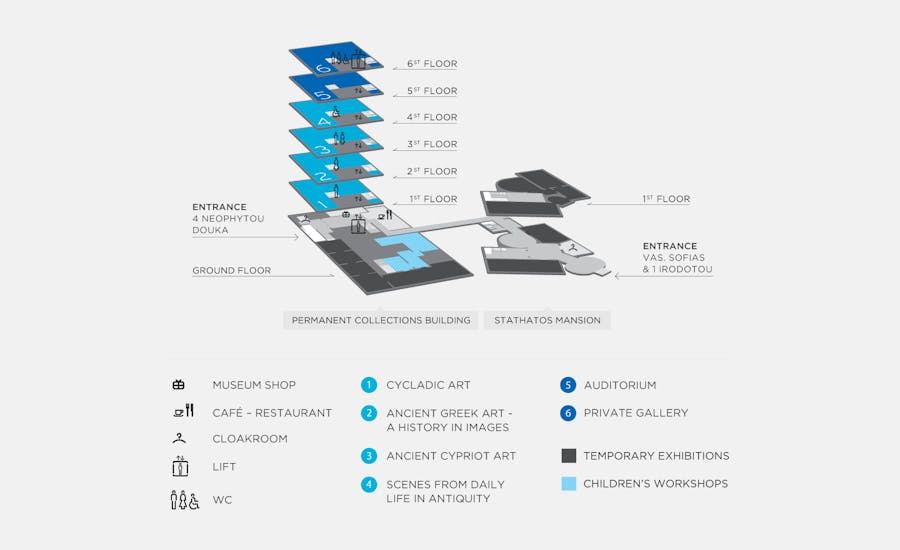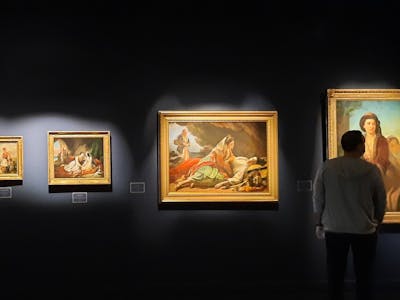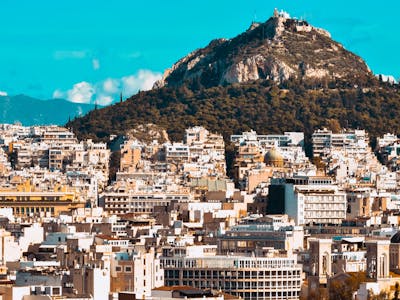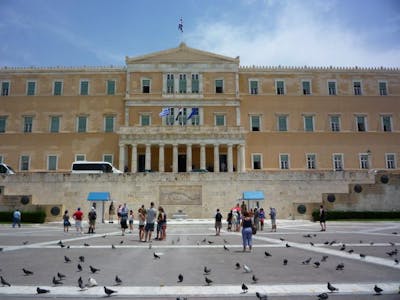The Museum of Cycladic Art is one of the many Greek places brimming with history and culture, and is located in one of the most plush neighborhoods of Athens - on Neophytou Douka street. Inaugurated in 1986, it houses a 5000-year old rich collection of Cycladic art from the islands of the Aegean Sea. It also holds a variety of art pieces from Cyprus and Ancient Greek civilizations, making it an iconic destination with an extremely fascinating collection. Apart from these permanent collections, the Museum’s temporary exhibitions have displayed notable works of archeology and modern and contemporary art in an attempt to highlight the parallels between ancient and modern artworks.
Each one of the four floors of The Museum of Cycladic Art is an insightful dive into ancient Greece and its neighbors.
Museum of Cycladic Art - Handy Information
Museum of Cycladic Art - Things to know
| 📍 Location: | Athens |
| ⏰ Suggested Duration: | 1-2 Hours |
| ☀️ Best Time to Visit: | Early morning or late afternoon |
| 🎟️ Museum of Cycladic Art Tickets: | €12 |
| 🚇 Closest Subway: | Evangelismos |
Museum of Cycladic Art Address
Neofitou Douka 4,
Athina 106 74, Greece
Get Directions
Must-see at Museum of Cycladic Art
The Cycladic Collection
Ancient Greek Art
Cypriot Art
Life in Antiquity
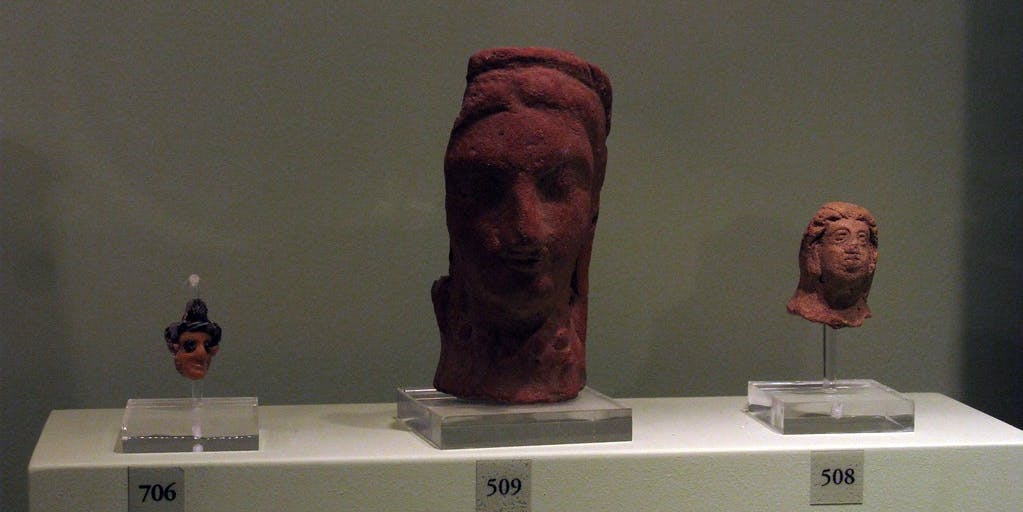
Tickets and Opening Hours
Ticket costs (for Permanent Collections)
- General admission: €8
- A reduced ticket cost of €5 for seniors (over 65 years), students and 19-26 year olds.
- Entry is free for kids (under 18 years), disabled visitors and their companion, Archeology and Art History students.
Opening Hours
- The museum remains closed on Tuesdays
- Monday, Wednesday, Friday, Saturday: 10 AM - 5 PM
- Thursday: 10 AM - 8 PM
- Sunday: 10 AM - 5 PM
The Museum of Cycladic Art has three permanent exhibitions - Cycladic Art, Ancient Greek Art and Cypriot Art. Each of them are some of the most important and biggest collections in the world and are displayed aross three floors of the building.
Best Time to Visit
Through the day, the place is generally most crowded between 1:00 PM - 2:00 PM, so if you wish to see less crowds, morning or late afternoon visits will suit you best.
The museum is indoors, so any time of the year is ideal for a visit. But if you're looking to take your own time to explore what the museum has to offer and avoid the tourist crowd, the best time to visit would be March and November. These months are considered the best time to see the many museums in the city. It is not very crowded and these months don't have many national holidays, which means attractions will be open throughout the month. Added bonus of less crowds means you can take your time to explore whatever catches your interest.
You can read more about the best time to visit Athens.
Why Visit
The Cycladic Museum was built to display the precious collection of Nicholas and Dolly Goulandris, which was started in 1960, way before the museum’s inauguration in 1986. The exhibitions consist of some highly prestigious and beautiful items, right from weapons, jewelry, idols and sculptures, and much more. All these are made from a variety of materials ranging from stone and clay to marble and bronze. The museum holds one of the most complete collections of Cycladic art in the world. It is also a Green museum, and actively aims to reduce its energy footprint, while also spreading awareness on environmental issues.
What is Cycladic Art?
The Cyclades are an area of 33 large and several smaller islands in Central and Southern Aegean waters. During the third millennial BC most individuals began using metal to manufacture tools, weapons and other items used in their everyday lives. Archaeologists believe the Cyclades'people were unified culturally in their earliest Bronze Age and were associated with mainland Greece and the mainland of Crete. The population started to move away from the larger and smaller settlement of Phylakopis, an archaeological site which can be found in Milos island.
The Cycladic Art style is a type of prehistoric art that emerged from the these islands in the Aegean Sea around 3200 BCE. These works are characterized by their sleek, white marble figures with elongated proportions and minimalistic features. Although relatively few Cycladic artifacts survive today, they have been tremendously influential in the development of later art movements such as Cubism and Abstract Expressionism.
One of the most famous examples of Cycladic Art is the "Venus de Milo" statue, which was discovered on the island of Milos in 1820 CE. This work, along with other Cycladic sculptures, has inspired numerous modern artists including Pablo Picasso, who once said: "It was I who created Cubism, but before me there was the Cyclades."
Importance of Cycladic Art and Culture
Cycladic culture is one of the three major Aegean cultures, making Cycladic art a major branch of Aegean art. Residing mainly in the islands on the Aegean Sea - a region of historic importance for many Ancient Greek civilizations, the Cycladic civilization was one of the vital contact links between Europe and Asia.
The artifacts consist of daily use items as well as decorations and sculptures, all of which gives you an interesting view of the kind of lives those people lived. The abstract marble figurines, which are the best-known art of the period, have inspired great artists of the 20th century, like Konstantin Brancusi, Amedeo Modigliani, Alberto Giacometti and many more.
Wide variety of collections
Your visit is not just limited to ancient Cycladic sculptures and items, as the name might suggest. The other two major permanent collections feature ancient Greek art and Cypriot art. Apart from that, the museum’s celebrated temporary collection has featured artworks from some of the biggest names in modern and contemporary art, including Pablo Picasso, Salvador Dali, Thomas Struth, Louise Bourgeois and many more. These modern artworks and other archeological pieces make your experience much more diverse and thoughtful.
Inside the Museum of Cycladic Art
The Permanent Collections Building
The museum's Permanent Collection is divided into three sections, across four floors: the Cycladic Art, the Ancient Greek Art and the Cypriot Art. Each of these collections are amongst the biggest in the world, and offer great insight into the eras that these artefacts belong to.
1The Cycladic Collection
Displayed on the first floor, the Cycladic Collection is definitely the highlight of the museum. An extension of the extensive private collection of Nicholas and Dolly Goulandris, it is one of the most complete collections of Cycladic art in the world. It includes a range of artifacts dating back to the Early Bronze Age The near translucent white marble figurines and vases have caught the attention of visitors and artists alike, influencing various artworks. Complementing these are the bronze or clay objects like Aegean pots and weapons used for rituals and daily-use, as well as intricately sculptured marble bottles, cups, plates, jewelry and smaller figurines. The simplistic perfection of these marvelous designs have inspired numerous contemporary and modern artists.
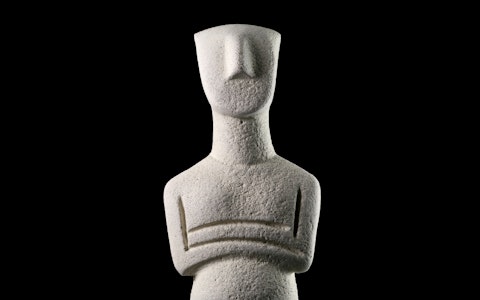
2Ancient Greek Art
Two permanent exhibitions are dedicated to Ancient Greek Art, making this collection a major attraction of the museum. The exhibitions on the second and fourth floor contain a huge variety of precious arts as well as objects belonging to a wide time span from 2nd millennium BC to 4th century AD. The second floor exhibition focuses on artistic, historical and technological developments in ancient Greece and displays them chronologically to help visualize the narrative. The revolutionary events that shaped the Greece we know today are clearly reflected by the art of this era. This includes everything from luxury items to simple everyday use objects like stone and bronze vessels, pottery, terracotta figurines, painted vases, coins, seals, jewelry and other items, decorated with representations of their gods and heroes. The visitors can interact with touchscreen panels to dive deeper into the significant developments that took place during the time.
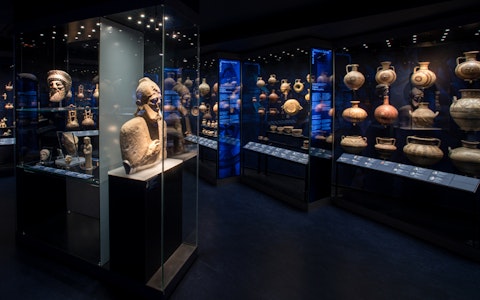
3Cypriot Art
The third floor of the museum presents the Cypriot Collection through an immersive interactive exhibition. With more than 800 artifacts from the 4th millennium BC to the Medieval period, The MCA’s collection of Ancient Cypriot Art is one of the largest such collections outside Cyprus. A bewildering and spectacular amalgamation of Greek, Egyptian, Nearby Eastern traditions and local cultures, the artworks depict the close relations between these civilizations. You can find prehistoric figurines, Archaic and Classical sculptures, inscriptions, bronze and gold jewelry, glasswork and even ceramics. The museum’s approach in setting up the lighting, decoration and illustrated surfaces makes the viewers notice and appreciate the details and imaginative shapes on Cypriot pottery and other items.

4 Life in Antiquity
The fourth floor exhibition features texts and art from 5th to 1st century BC, about the Greek society’s religious habits, myths and beliefs. Walking through the collection gives you a solid perspective and understanding of ancient Greek societies.
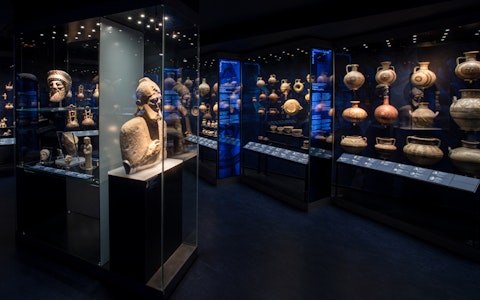
The Stathatos Mansion
The Stathatos Building in the Museum of Cycladic Art is a stunning example of modern architecture. A stunning structure with hints of classic Greek architecture, as well Romantic Classicism with gold inlays and marble staircases on the inside, and statues of Greek goddesses - Athena and Nike - on the façade. Aside from the exhibits it hosts, the building itself is worth the visit; it is notable work of the Bavarian architect, Ernst Miller, this building remains an important example of the neoclassical architecture.
This building hosts temporary exhibits and is constantly home to some of the best curated works, including those from contemporary artists as well as themes that explore ancient Graecian culture.
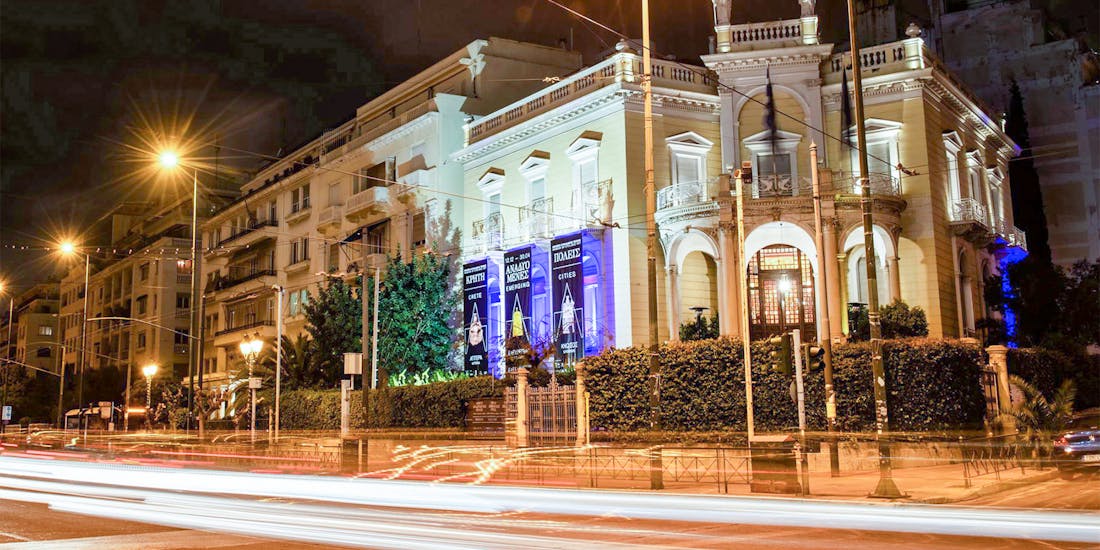
Where To Buy Museum of Cycladic Art Tickets?
The best option is to get your timed Museum of Cycladic Art tickets online since you need not worry about being denied entry. Booking them online also gives you the perks of discounts and cashback, saving you time & money.
Getting There
- By Metro: Evangelismos station (line 3) or Syntagma station (lines 2 and 3)
- By Bus: Rigillis lines A5, E6, E7, X14, O54, 200, 203, 204, 220, 221, 224, 235, 408, 608, 622, 732 and 815.
Insider tips for your Visit
- There are comprehensive and interesting texts on display accompanying all exhibition items. They also include maps, chronological charts and touch screens. Make sure to have a read to make your visit more insightful.
- The museum has facilities like a Book and Gift shop and The Cycladic Cafe, which has a delightfully charming ambience to surround you as you enjoy some hearty Cycladic flavors and aromas for breakfast, brunch, snacks or lunch. Have a sneak peek at the menu before your visit.
- The MCA has developed its app to offer free digital self guided tours in Greek, English and French. You can look for the numbering on some selected items and find detailed information about them through the app’s tours.
- Make sure to check out the exhibition of contemporary art in the new building to completely absorb the experience that the museum tries to offer. You can reach there by a tunnel that connects both the buildings internally.
- Don’t forget to look at the suggested activities page before your visit. There are many interactive and fun workshops, contests and other events on different themes taking place round the year that you’d not want to miss!
Things to do Nearby
Restaurants Near the Museum of Cycladic Art

A quaint restaurant specialising in healthy foods, Me Kolonaki is barely a minute away from the museum. It is particularly well known for its savoury, protein-rich crepe and iced latte. Many gluten-free and vegan options available!

An Italian fine-dining restaurant, the Alfiere Caffe is best if you're feeling up to a pizza and wine. The restaurant is famed for it's perfect pairings and serves one of the best cups of coffee in the city! Keep in mind that reservations are required, so make sure to book in advance.

Established by the famous Greek chef, Stelios Parliaros, Sweet Alchemy is a little pastry shop that's the perfect pitstop for decadent dessert after your meal. Their loose chocolates are specially delightful!

TGIF's famous American foodchain has set up shop right next to the Museum of Cycladic Art! Serving up burgers, beers and fries the American way, TGIF is but a stone's throw away from the museum.

A Greek restaurant with authentic cuisine less than half a kilometre from the museum, Karavitis is a quaint little place that emanates Mediterranean vibes with it's rustic outdoor sitting. Their lamb chops and wine selection are a must-try!
FAQs
How much does it cost to go to the Museum of Cycladic Art?
What is the Museum of Cycladic Art?
What is Cycladic Art known for?
Where are Cycladic Figurines usually found?
Is Cycladic Art pre-historic?
What are Cycladic figures made of?
How did the Cyclades form?
What are some characteristics of art from the Cycladic Islands?


